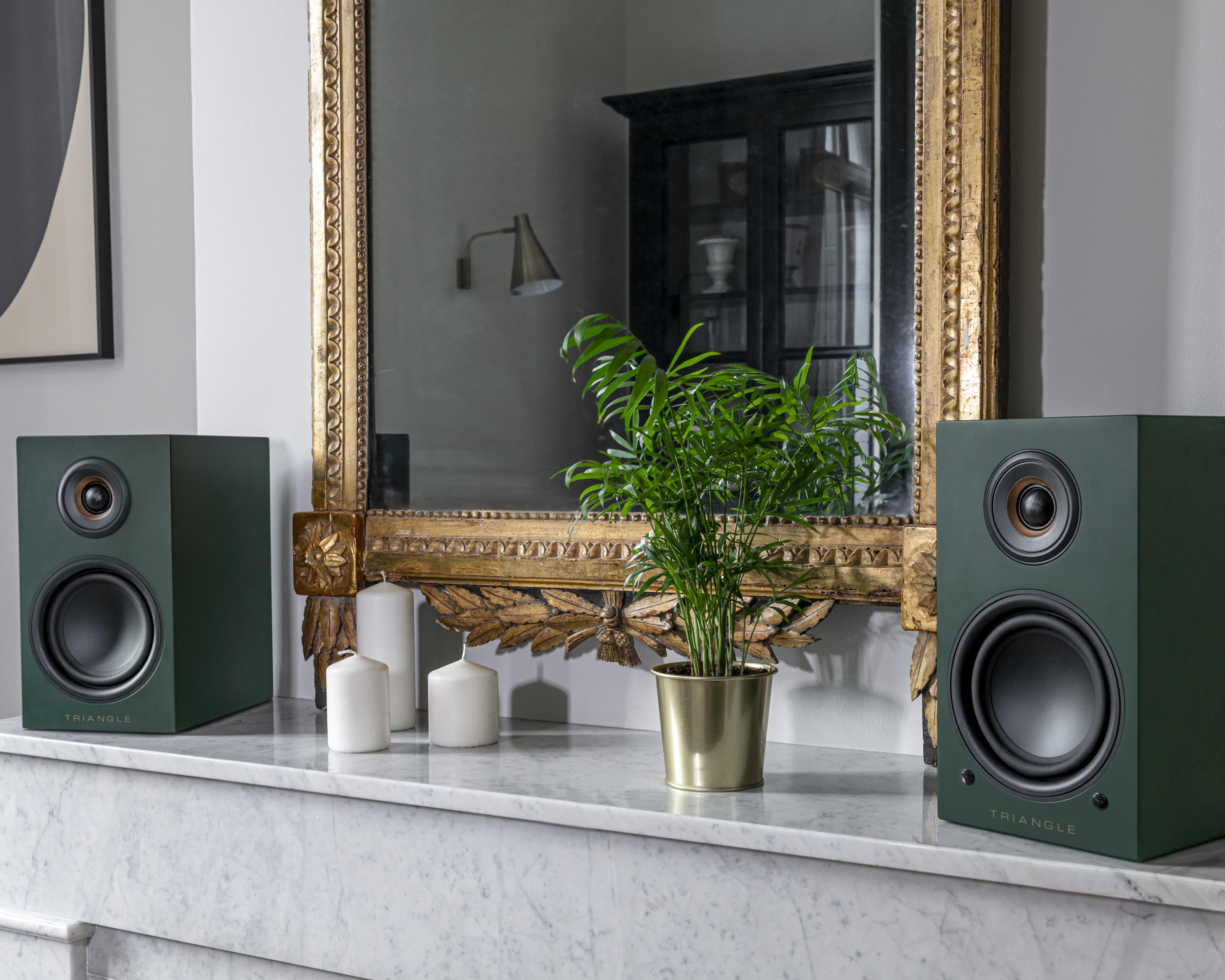Spotify vs Apple Music - which should I choose? The expert guide to help you decide
Spotify vs Apple Music? Here are the pros and cons of each streaming service so you can make the right decision


In the battle of Spotify vs Apple Music, which are you better off with? Launched in 2008, Spotify has been many people’s default music player for years, but while Apple Music is only seven years old, the huge budgets of the world’s first $3 trillion company have quickly made it into a serious streaming contender.
You might assume that Apple Music is just for those tethered to their iPhone, Mac or iPad, but you’d be mistaken. Apple’s streaming platform is open to all, but can it compete with the big name synonymous with music streaming, Spotify? Let’s find out.
While writing for tech brands such as T3 and Tom's Guide, Alan has had to be at the forefront of what is happening in the world of streaming. It has given him a real understanding of the nuance of what the different services have to offer and how they fit into the lives of people of use them, and it was this insight he was able to bring to shrewdly assessing the differences between Spotify and Apple Music.
Spotify vs Apple Music: Pricing
For the majority of paid subscribers, the cost is exactly the same. Both Apple Music and Spotify charge $9.99 per month (or $4.99 for students), and you can also get a discount by paying $99.99 upfront for a whole year, which brings the price down to $8.33 per month.
There are also family plans for both for up to six accounts, and here there’s a dollar difference, with Apple charging $14.99 and Spotify $15.99.
If you’re into Apple’s other services, you may want to consider an Apple One account, which bundles Apple Music with other services including Apple TV Plus, Apple Arcade, Apple News Plus and Apple Fitness Plus, with prices starting at $14.95 per month.
That’s the full list of Apple Music options, but Spotify has two more which might appeal. For $12.99 per month, you can get a ‘Duo’ account aimed squarely at couples. This behaves as you would expect, but has a nice extra where each partner’s top songs are pooled into a shared playlist for the pair to enjoy.
Spotify also has a free tier, but frankly it’s not a particularly enjoyable experience with limitations in place designed to get users to upgrade to a paid subscription. You have severe limits on picking the songs you want to listen to, there are limited skips, reduced sound quality and frequent ad breaks. Still, you can’t argue with the low price of ‘free’.
The Livingetc newsletters are your inside source for what’s shaping interiors now - and what’s next. Discover trend forecasts, smart style ideas, and curated shopping inspiration that brings design to life. Subscribe today and stay ahead of the curve.
Spotify vs Apple Music: Libraries
You shouldn’t really have to worry about serious gaps in either library. Apple Music claims it has a library of “over 90 million” songs, while Spotify said last February that it had “more than 70 million tracks.”
A win for Apple Music? Well maybe, but it’s doubtful, because reports claim that 60,000 songs are uploaded to Spotify every day and, if accurate, that means the company will have cleared that gap in the intervening year.
In short, you should find both catalogues have everything that you’re looking for, unless your tastes are extremely obscure. Though if you’re particularly keen on Neil Young or Joni Mitchell, you’ll want to put your money behind Apple Music, due to the two artists’ ongoing protest at Spotify’s podcasting operation.
While Apple Music originally tried to attract customers by way of exclusive tracks and albums, this is something that the company has backed away from in recent years. “The labels don’t seem to like it and ultimately it’s their content,” former Apple executive Jimmy Iovine admitted in 2017.
Spotify vs Apple Music: Sound quality
One area where Spotify has slipped behind its rivals in recent years is in sound quality. While the free tier is capped at lower quality, paid subscriptions allow users to go up to “very high” quality, which is 320kbps. For now, it’s not lossless, though the company is planning on releasing Spotify HiFi at some point to fix this omission for CD-quality audio.
But in the here and now, Apple Music is the clear winner. While standard-quality streaming is 256kbps, Apple Music already offers lossless audio ranging from 16-bit/44.1kHz to 24-bit/192kHz. It also supports Spatial Audio to make tracks sound more immersive, as if you’re hearing it live.
Audiophiles will notice the lossless difference, but even if you consider yourself one, you need to have the right hardware. Lossless doesn’t work over Bluetooth, and even Apple admits that even its super-expensive AirPods Max headphones won’t support it, even when connected with a wire.
Spotify vs Apple Music: Connectivity
While you might assume from the name that Apple Music is for iPhones and Macs only, Apple has wisely decided that winning the streaming war means opening the door to Android and PC owners too. As such, there are apps for iOS, Android, Mac and PC, and the library can be accessed through your web browser too. Apple recently released a PS5 app, too, so it doesn’t look like the company is resting on its laurels.
It’s better if you’re in the Apple ecosystem, of course, with Apple TV, Apple Watch and HomePod support. It’s especially good on the latter, where you can hand off audio from your iPhone, or simply ask Siri to play your chosen tracks (or even ask esoteric questions like “Siri, who plays drums on this?”). That said, Amazon Echo users can also select Apple Music as their player of choice, should you like to mix and match your hardware manufacturers.
All of this is impressive, but it can’t (yet) compete with Spotify, which has the advantage of having been synonymous with streaming music for over a decade. As such, it has apps for everything you could possibly imagine, from Xbox to your smart TV, as well as built-in support from Google’s Nest Audio speakers.
Best of all, it has something called Spotify Connect, which lets you pass your music from one device to another, while still controlling it on the first one. In other words, you could be listening to music on your PC, then select your kitchen speaker in the Spotify Connect bar, continuing to control the selection from your desktop.
Spotify vs Apple Music: Other things to note
Outside of music, Spotify is attempting to position itself as the home of podcasts, and has put serious money behind the venture with the purchase of Gimlet, Parcast, The Ringer and The Joe Rogan Experience. Apple, meanwhile, keeps podcasts in a wholly separate app, making it entirely independent of Music and irrelevant to the subscription fee.
There are pros and cons to this, but it’s worth noting that for those uninterested in podcasts, Spotify is quite aggressive at promoting them as part of its UI with no option to opt out.
For Apple Music, the best unique selling point is something Apple is bizarrely shy about promoting: iCloud Music Library. This lets subscribers access music uploaded to their iCloud account as if it were part of the wider streaming library, which is a great way of filling the rare gaps in the catalogue.
Technically Spotify also lets users play their own MP3s in the app but A) it’s never worked especially well, and B) even if it did, you’d need to store a copy of each song on each device, so it’s a less elegant solution.
Otherwise, there’s little difference between the services: both let you create custom playlists and both are very good at recommending new music for you, based on your listening history.
Spotify vs Apple Music: Verdict
Just as in the battle of Spotify vs Amazon Music, both services have their pros and cons. While Apple Music offers better sound quality and is brilliant for those fully invested in the Apple ecosystem, Spotify wins out in terms of connectivity and podcasts.
The two offer impressively vast libraries, though Apple Music’s ability to expand on this via iCloud Music Library arguably gives it the edge there.
Ultimately, you may be best off grabbing a free trial of both and seeing which works best for your specific needs.

Freelance contributor Alan has been writing about tech for over a decade, covering phones, drones and everything in between. Previously Deputy Editor of tech site Alphr, his words are found all over the web and in the occasional magazine too. He often writes for T3 and Tom's Guide. When not weighing up the pros and cons of the latest smartwatch, you'll probably find him tackling his ever-growing games backlog. Or, more likely, playing Spelunky for the millionth time.